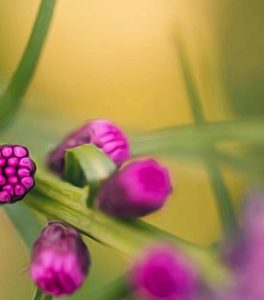 When it comes to flowers, colour, shape and fragrance get all the attention. Perhaps that’s as it should be – I mean, it must take a lot of evolutionary wherewithal to create the ornamental flair of an orchid or a fushia, or the scent of rose or jasmine. Still, I can’t help but wonder… what about size? This, I believe, is the most underrated of distinguishing characteristics in flowers.
When it comes to flowers, colour, shape and fragrance get all the attention. Perhaps that’s as it should be – I mean, it must take a lot of evolutionary wherewithal to create the ornamental flair of an orchid or a fushia, or the scent of rose or jasmine. Still, I can’t help but wonder… what about size? This, I believe, is the most underrated of distinguishing characteristics in flowers.
For example, consider the Allium giganteum, with its larger-than-life baubles perched like lollipops on tall, straight stalks. Known for making toddlers feel even smaller than they already are, these flowers have the capacity to make even adults feel like they’ve shrunk. I think it’s fair to say that the pleasingly spherical shape of the flower heads and their cheerful purple colour add significantly to the cartoonish effect, but it’s really the size that gives them the X-factor.
On the other end of the spectrum, you’ve got something like the seaside daisy. The dainty little flowers and feathery foliage make it a delightful groundcover, with much of its charm coming from its small scale. If the flowers were even double the size, they’d arrest our attention to a lesser degree; they’d be much more run-of-the-mill. Some might disagree with that statement, but I stand by it. Take note when you next see some of these – I’m willing to bet your eyes follow the trail of flowers primarily because they’re strikingly petite.
Naturally, there are smaller flowers – like forget-me-not, baby’s breath, and rosemary and thyme flowers – and bigger ones, like the parasitic Rafflesia or ‘corpse flower’. My aim, though, is not to start a street fight for the dubious honour of Most Extreme Proportions. I just mean to point out that size and scale have a place among the finer points of flower appreciation. This is something gardeners may like to note in creative planting design that the eye and imagination on a visual journey.